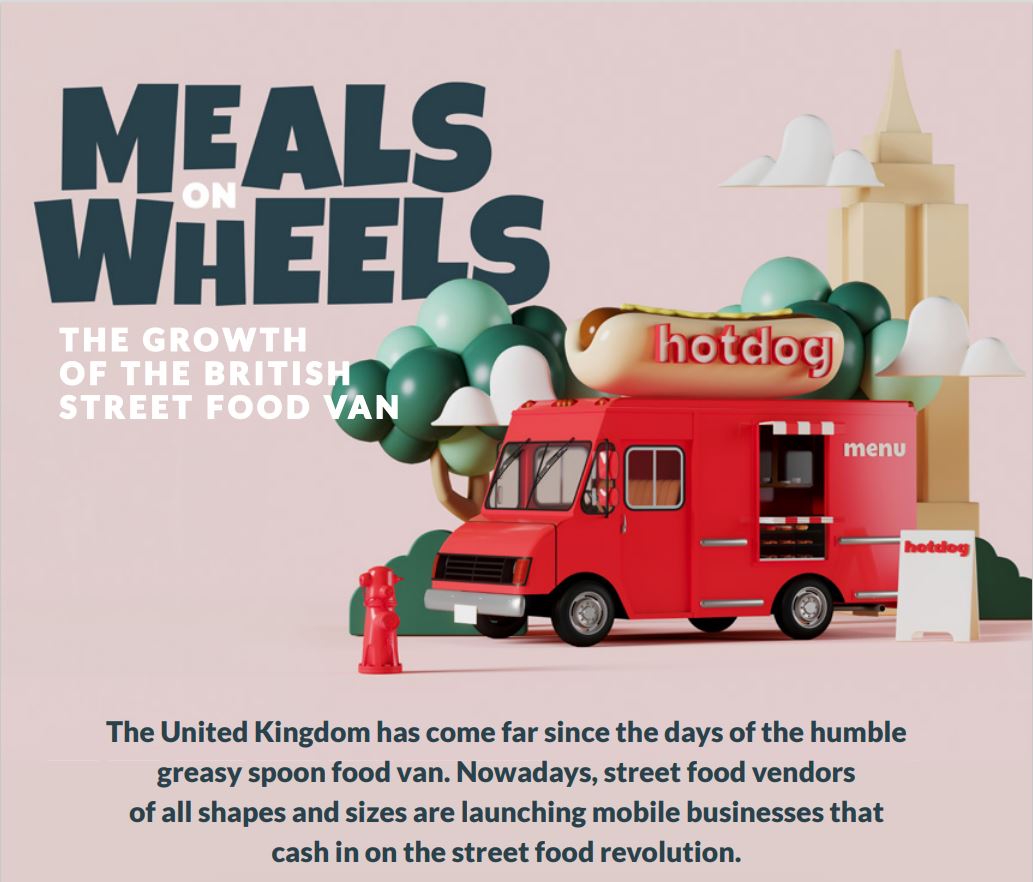Until about 20 years ago, street food was a remote concept in the UK. Luckily for the Brits, the street food craze is growing, and it not only satisfies our hunger for distinct cuisines but also weaves into our daily lives.
The COVID-19 pandemic put a spin on the way we eat out, with indoor venues having shut their doors. Business entrepreneurs spotted the opportunity to cut their rental costs significantly, attract new customers, and literally be at the market forefront by going mobile. Consumers are in favour of this trend, as 50% are buying street food at least once a week, according to a 2016 report.
Since this is a fairly new concept, many people are wondering how to go about serving meals on wheels. The van leasing company Van Ninja has put together an in-depth guide on starting a street food business from start to finish.
The street food revolution
With about 2.5 billion street food enthusiasts around the world who indulge in meals prepared on the go on a daily basis, the street food industry is flourishing. Street vendors such as food booths, food carts, and market stalls offer consumers an appetising quick bite. But the one vendor that has been catching the eyes of many in the past 10 years is the street food van.
Currently, there are over 7,000 units that serve food throughout the UK at festivals, markets, and stadiums, and they’re seeing a continuous growth of 20% year on year. Recently, the appetite for mobile food vans has extended beyond recreational events and is now catering for office workers at business estates all around the country.
The early-morning beep outside of your office building is now synonymous with the arrival of an exciting breakfast. It seems that the food van is winning over the classic supermarket meal deal, as 64% of consumers are more than willing to spend more on satisfying street food than the average lunchtime spend.
The pros and cons of setting up a food van
Setting up a food van is a great entrepreneurial adventure, and if you do things right, you’ll reap the many benefits of the mobile food business. But before you start making a business plan, there are two vital things to consider: you need to be in for the long haul, and you need to absolutely love food.
Of course, money is an important part too. Luckily for you, running a food van business is much more cost-effective than serving meals on physical premises. In fact, the cost of setting up a restaurant can be well over £50,000, while the prices for food vans start from under £5k for a used catering trailer, according to the Nationwide Caterers Association.
There is a wide variety of food trucks to suit your needs and budget. If you want a small new trailer or a second-hand van, you’ll pay around £5k–£10k. If a new convertible vehicle is a better option for you, be prepared to pay £20k+.
Streetfood.org.uk has rounded up the pros and cons of setting up your food van business. A chance to cook your favourite dishes while putting an end to the 9–5 schedule and paying a low rent of £30–£100 per day are some of the benefits of the business. However, laws against trading locations, the early, unstable hours, and initial low profits might be a put-off for some.
Set-up checklist
Don’t know where to start setting up your food van business from? This checklist will help you with the kick-off.
- Buy and equip your own van, either new or used
- Register as a business with HMRC
- Register as a food business with your local authority, and get a Food Hygiene rating from the Environmental Health
- Get public liability insurance for your business and your employees
- Have a Gas Safe engineer fit and certify your gas equipment
- Get a PAT test certificate for your electricity
- Get a personal food hygiene certificate
- Set up a website and promote your business on social media
- Buy stock, get in touch with events/festivals/locations, and start cooking!
Food van essentials
Before you start selling food, you’ll need to adapt your van to your needs.
It’s best to start with a used van so that you can spread your budget around the essentials. Some of the most important things you’ll need include an extractor fan for steam, a fridge (and freezer, if needed), fire-fighting equipment, good lighting, utensil storage, and separate hand and dish-washing sinks.
Once you have the basic layout prepared, it’s time to call upon your DIY skills. You’ll need them in order to set up a stove, a food prep area, storage for food, and water heaters and tanks. A draining board, a grease trap, and a waste disposal system are also needed.
Lastly, you need to decide what food you’re going to serve – that’s the fun part! According to Chef’s Pencil, Britain’s favourite cuisines include Chinese, Thai, Italian, Indian, Mexican, and American, amongst others. The hunger for “authentic experiences” is real, as 45% of the respondents who took part in a Caterer.com survey claim that food stalls provide them with a more bona fide experience than high-street restaurants.
If you’ve been looking for your next business adventure, a street food van might well be the right fit for you. It’s cost-effective, flexible, and comes with a host of other benefits. Hurry up and get on the rising trend so that you can be the next man (or woman) with a van.
Sources
https://www.bgateway.com/assets/market-reports/Street-Food.pdf
https://startups.co.uk/guides/how-to-start-a-street-food-business/

